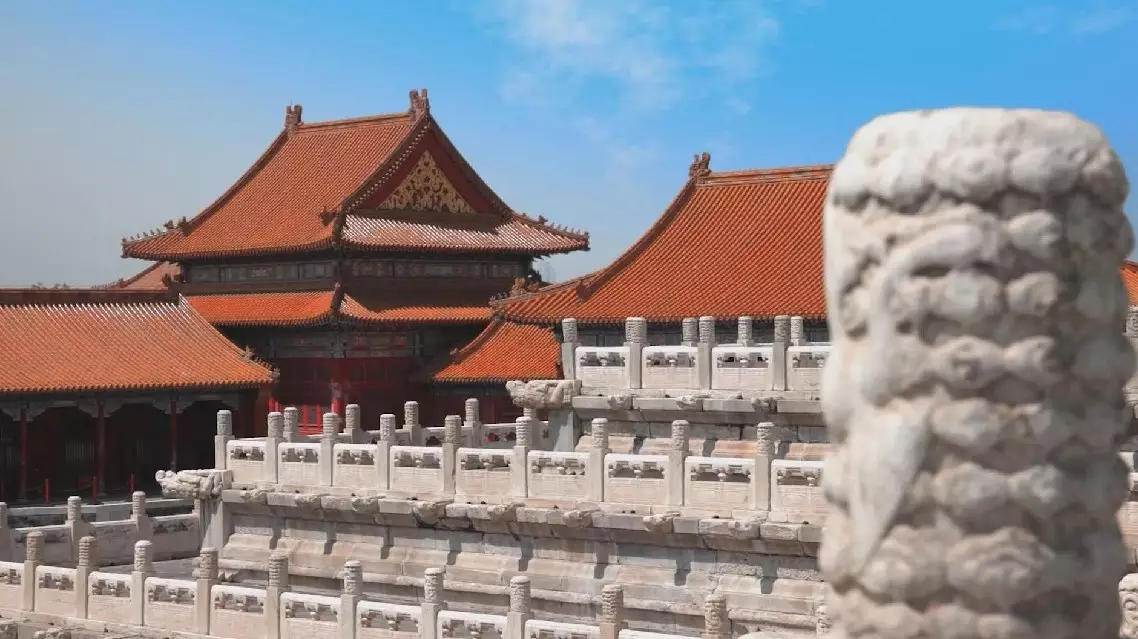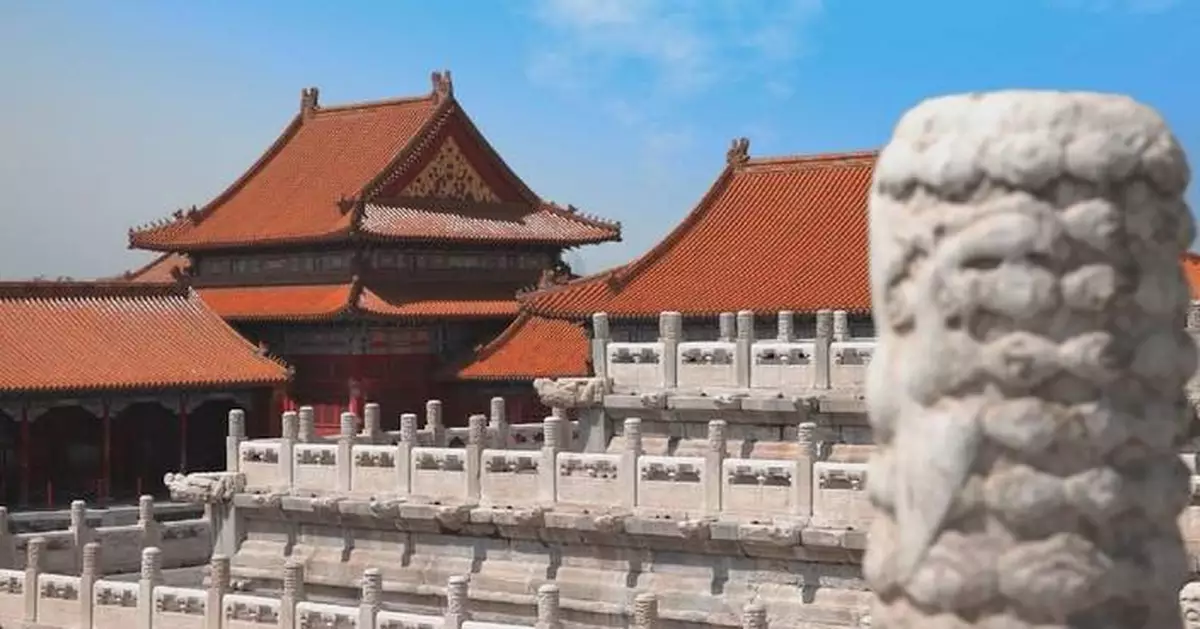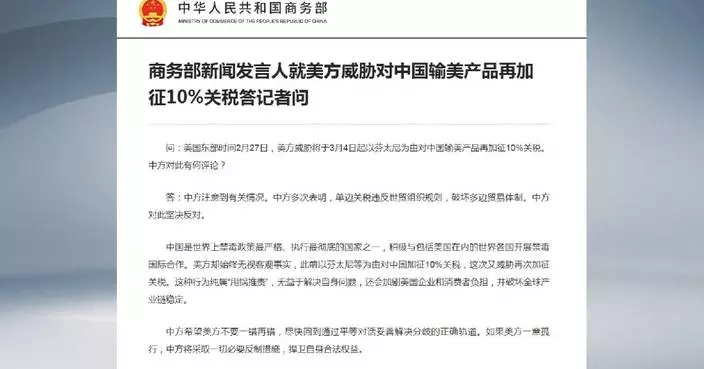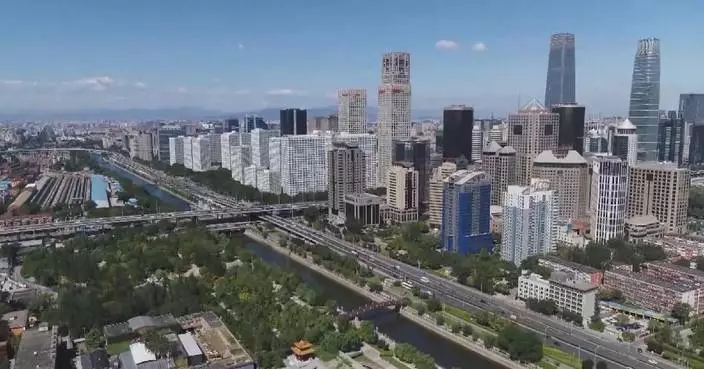The efforts for preservation of the Beijing Central Axis not only safeguard history, but also provide insights for future conservation, ensuring that the legacy of China's architectural treasures endures.
As a building ensemble, the Beijing Central Axis serves as a spine for the city, exhibiting the ideal order of the Chinese capital and culminating in the majestic Forbidden City. The north-south axis was established in the 13th century, fully formed in the 16th century, and was recently listed as a UNESCO World Heritage site.
The Hong'en Taoist Temple is located 200 meters north of the Bell and Drum Tower, at the northern end of the Beijing Central Axis. The newly renovated temple, covering an area of over 3,000 square meters, has witnessed the changes of the city for 700 years, spanning the Yuan (1271-1368), Ming (1368-1644), and Qing (1644-1912) dynasties.
The temple has been partially painted and partially kept as it was.
"There's no particular intention. It is a common practice to protect cultural heritage nowadays. That is, to preserve as many historical messages as possible. In the past, we lacked or did not have enough awareness in this regard, and many valuable things were destroyed due to renovation. In recent years, we have attached great importance to this aspect of our work. So what we're seeing now is that we restored the missing parts as they were. And considering its recognizability, we didn't make it in a retro style. You can see the old parts are truly authentic, showing visitors an original picture," said Gao Yejing, chief expert of the technical expert committee of the repair and construction of protected houses in Beijing.
Ancient architectural painting did not simply express people's spiritual pursuit of beauty. It also reflected the practical value of the working people. In history, buildings were mostly wooden structures. To protect against damage by insects and moths, craftsmen brushed the wood with lacquer, the Chinese wood oil, as an undercoat.
About 2,500 kilometers south of the Hong'en Temple lies the Guandi Temple, which is dedicated to Guan Yu, a deified historic figure in the Three Kingdoms period (220-280).
Built in the Ming Dynasty, the temple is undergoing restoration with ancient Chinese architectural techniques, including bricks, tiles, and techniques of wood carving and house painting.
"There are many ancient buildings throughout China, and renovation has been carried out every year to make ancient architectures as they were. Thus, a large amount of bricks and tiles are used to repair old structures each year. So, there is sufficient room for the subsistence of ancient architectures," said Lu Tiancheng, executive project manager of Beijing House Repairs Construction Engineering Co.
As there are thousands of ancient buildings along the Beijing Central Axis, the architectural traditions and building techniques pass down through generations, leaving enough clues and space for future generations to understand and better preserve these giant treasures across China.

Preservation of architectural heritage binds past and future










